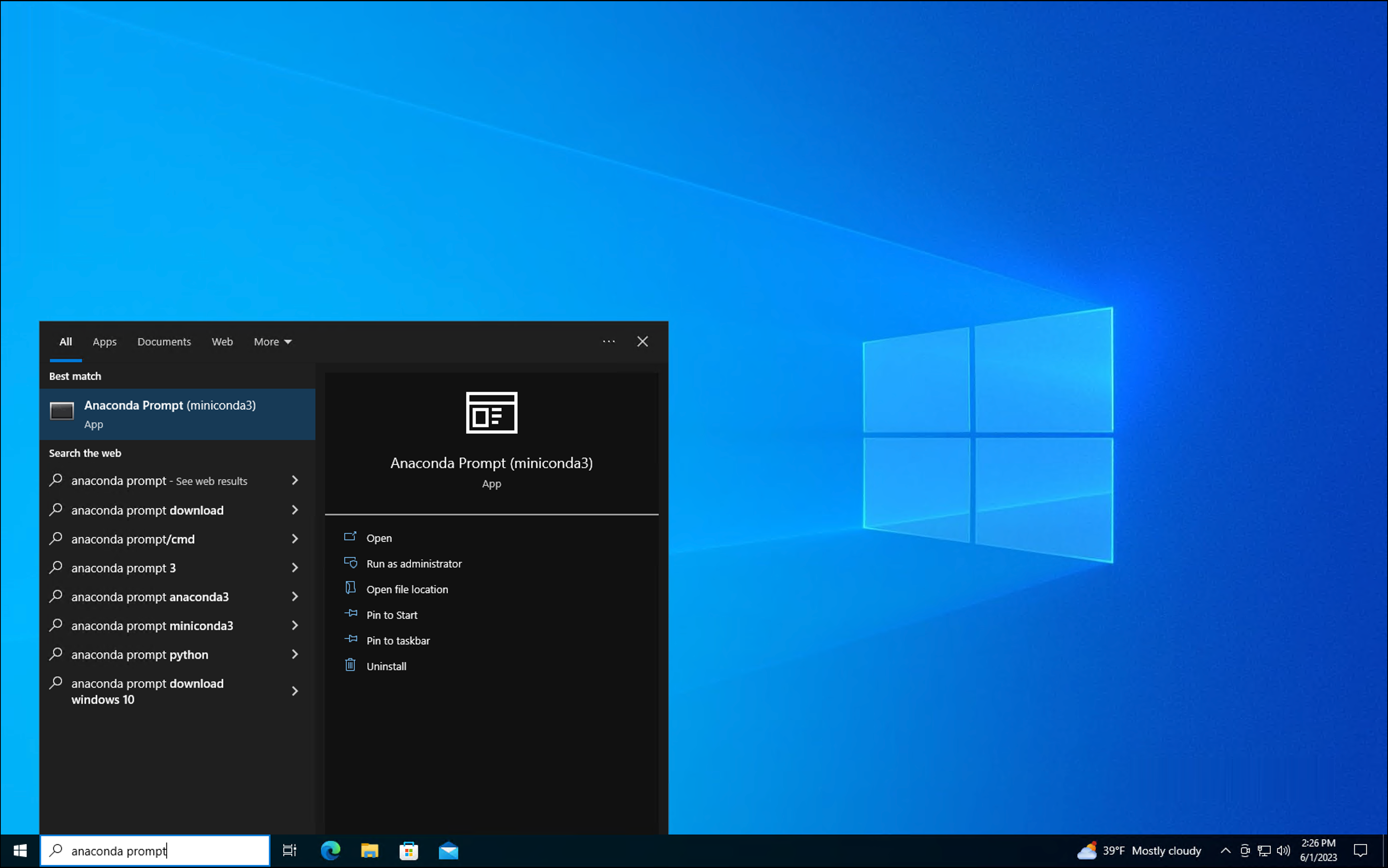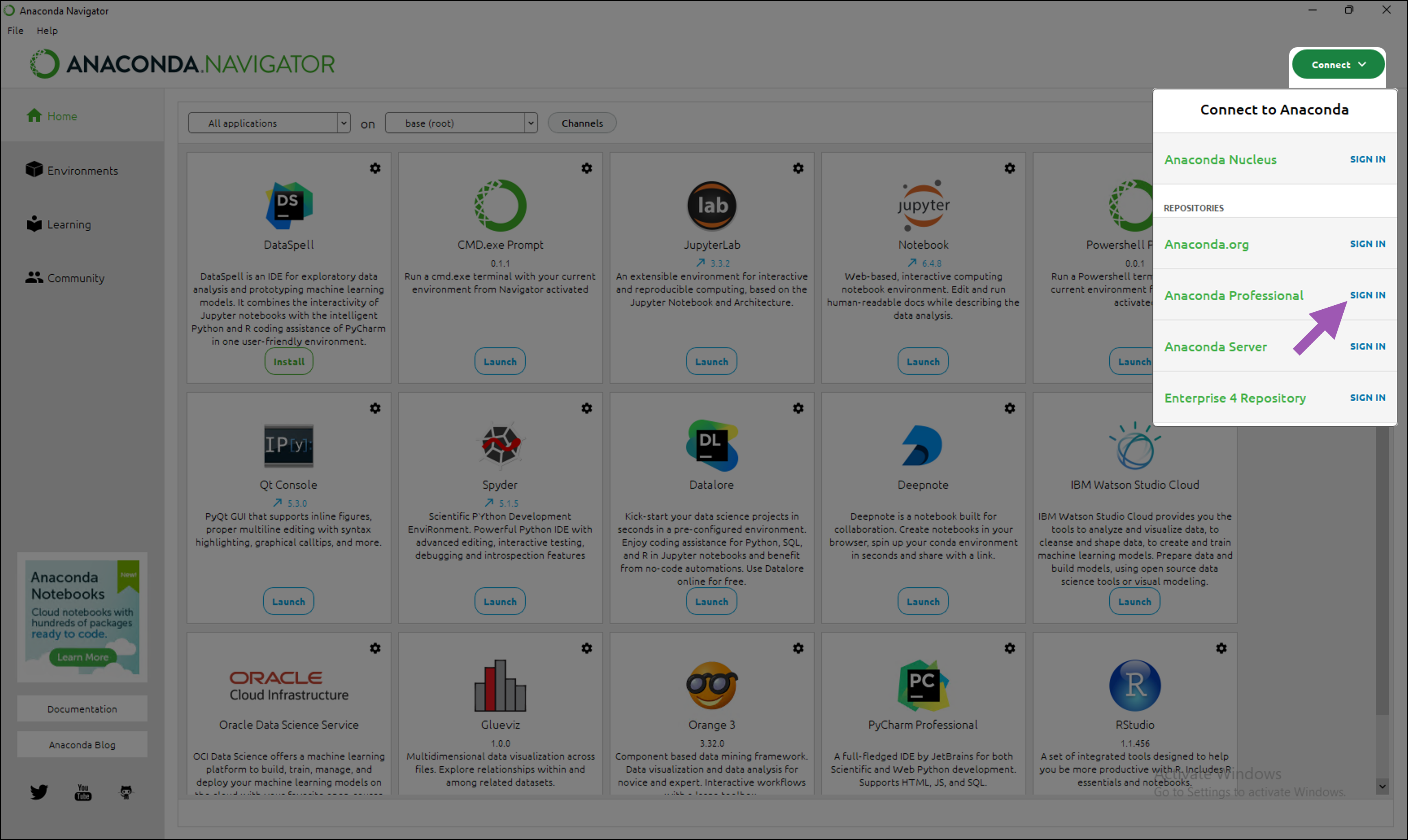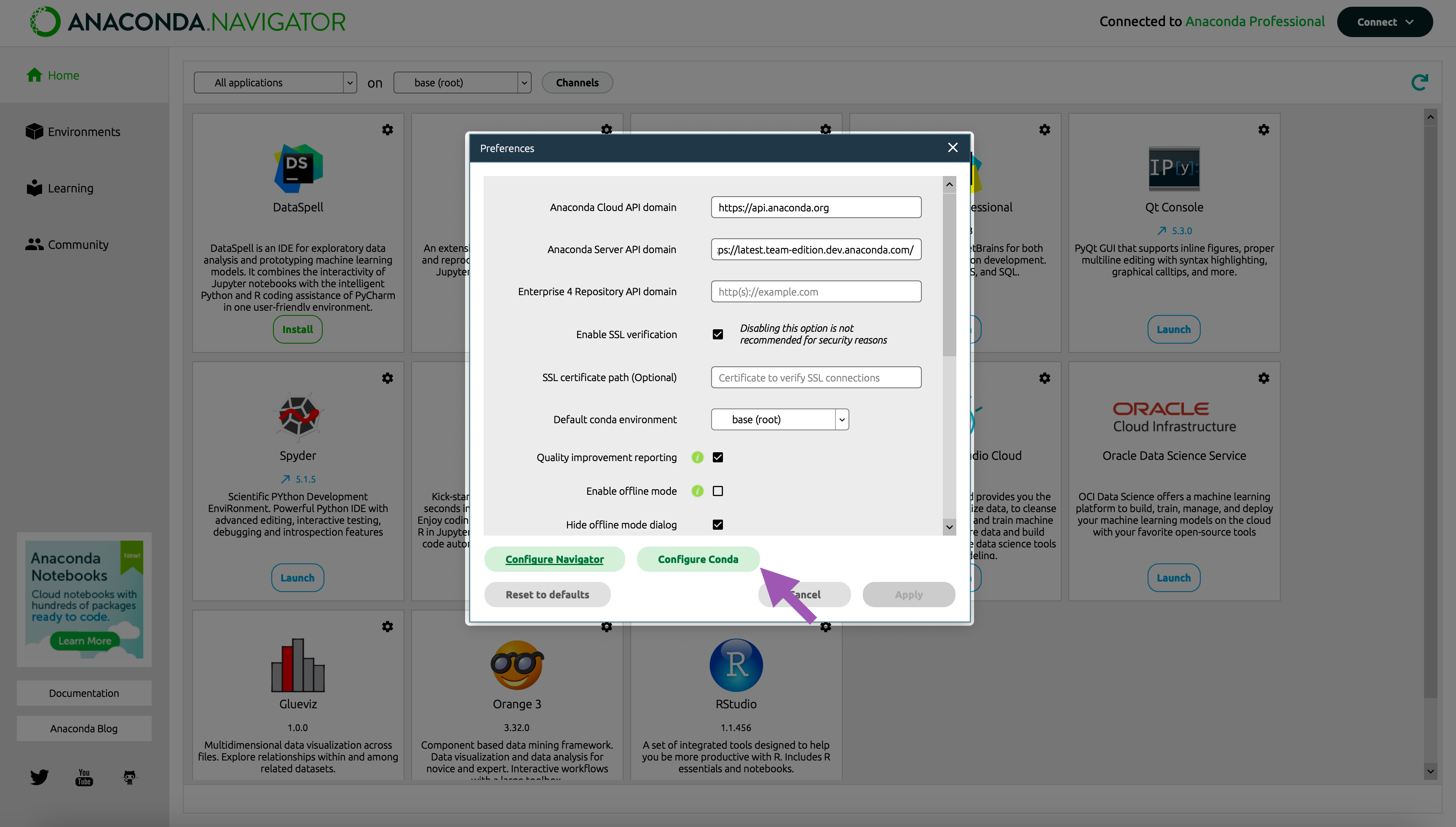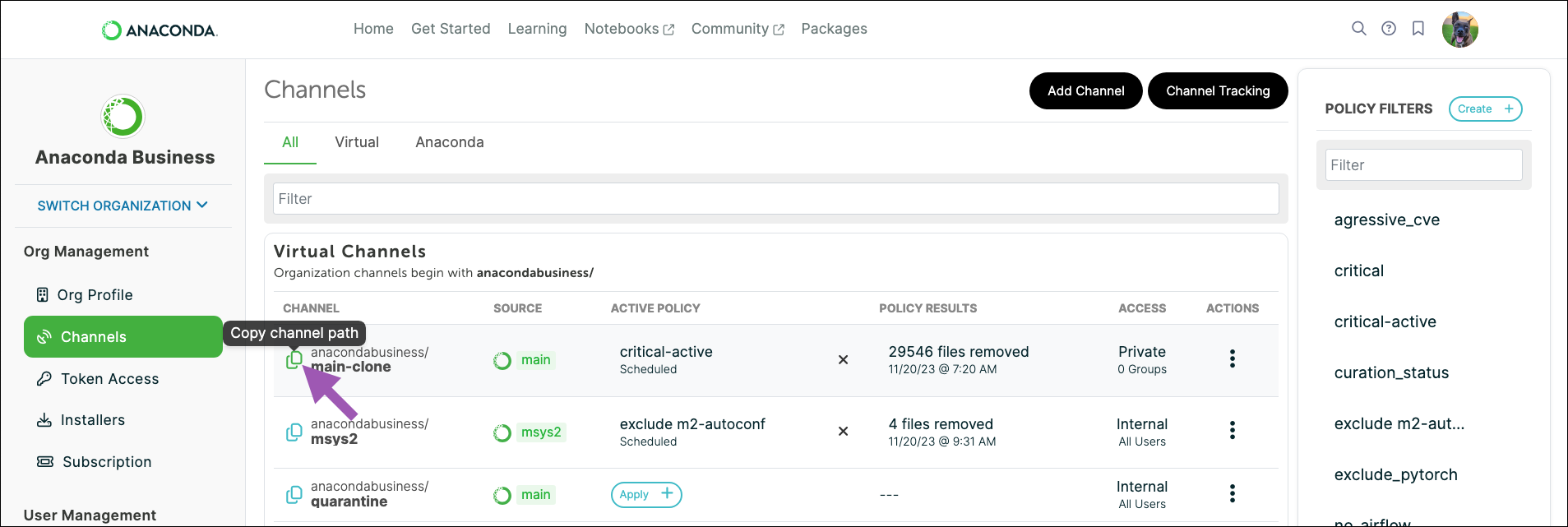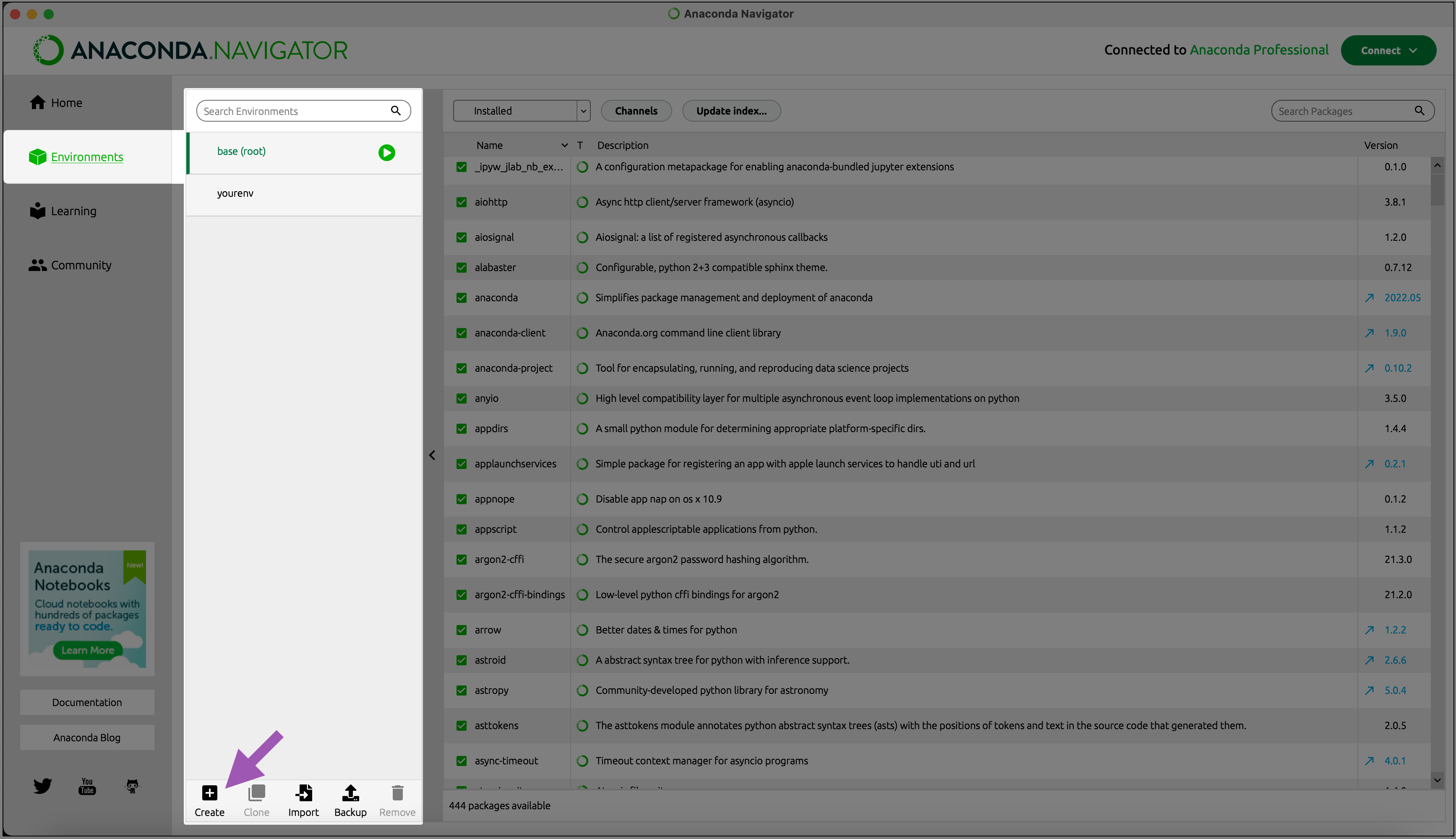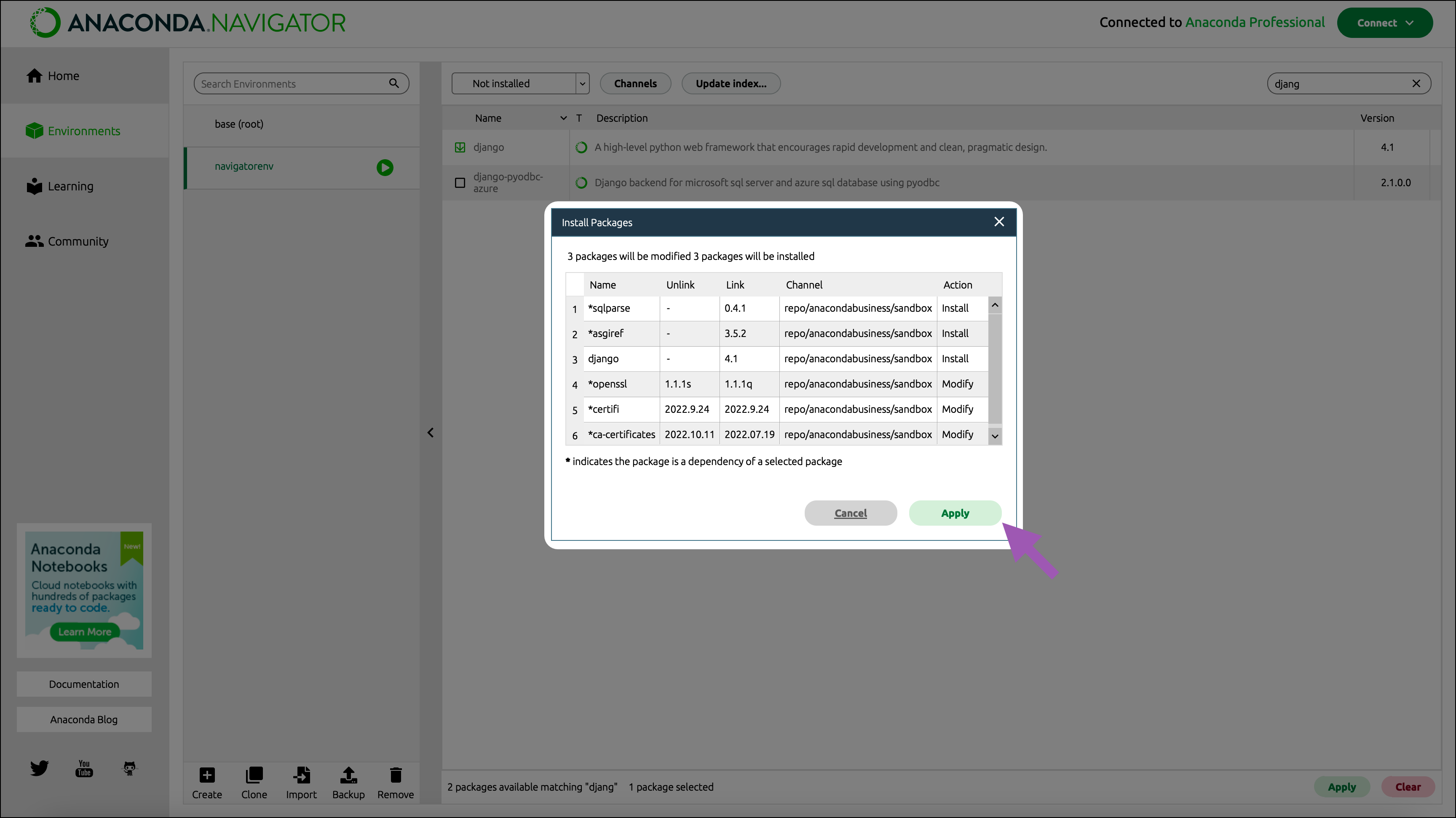Quickstart guide#
This quickstart guide is intended to help you create an Anaconda account, obtain conda software, and configure it to access your instance of Anaconda.
Creating an account#
Go to https://anaconda.cloud/sign-up.
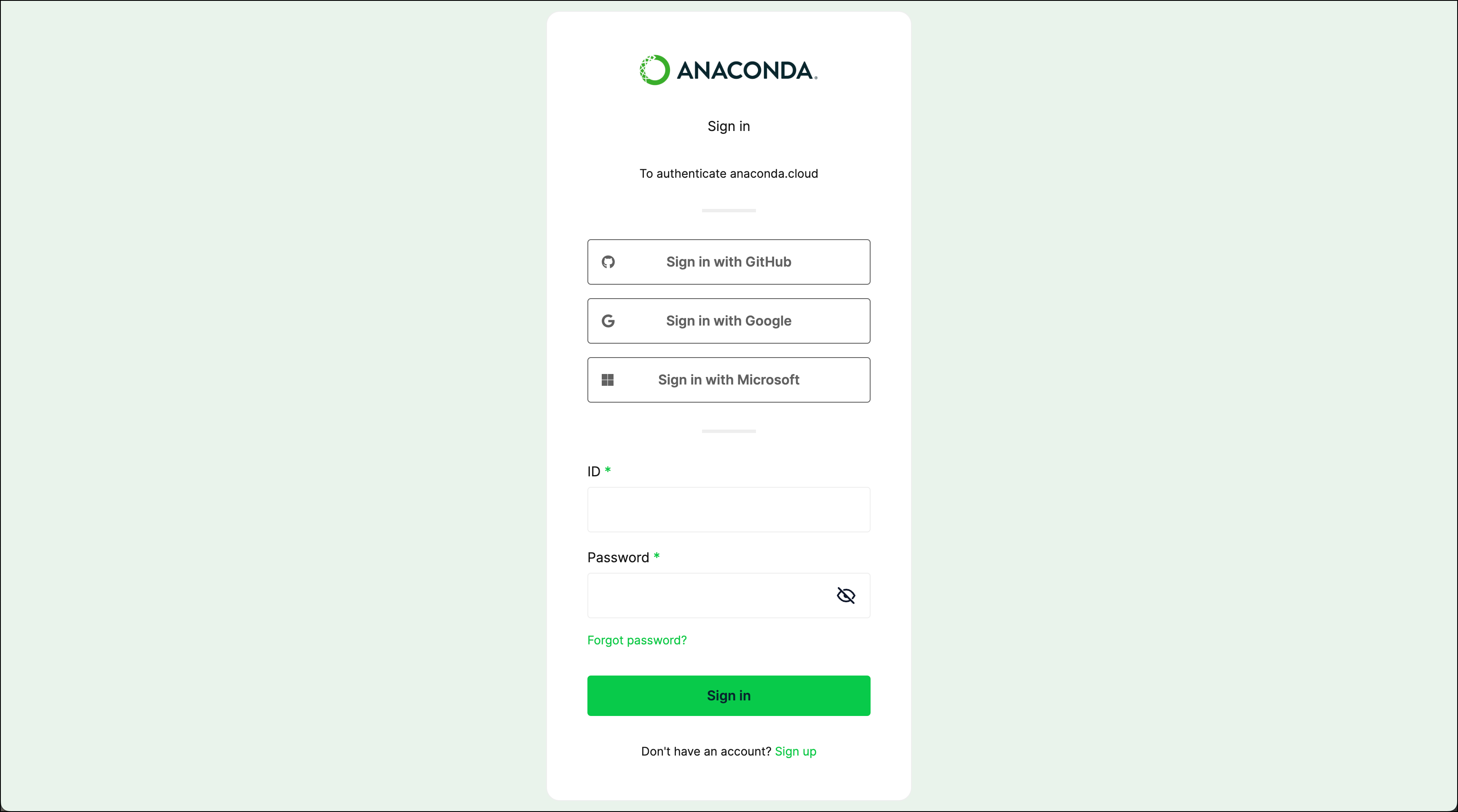
From here you have several options for account registration:
Sign up manually with an email and password
Authenticate with a GitHub, Gmail, or Microsoft account
Signing up manually#
Click Sign Up with Email.
Enter your name, email address, and password.
Check your email for the verification email.
Click the verification link in your email to complete account verification.
Subscribing to Anaconda#
For information and help with managing subscriptions, see Subscriptions.
Installing conda software#
If you already have Anaconda Distribution or Miniconda installed, you’re all set to move forward!
If you have not installed Anaconda Distribution or Miniconda yet, download either Anaconda Distribution or Miniconda and install it on your system before proceeding with configuration.
Still not sure what to choose? Refer to our Anaconda Distribution vs Miniconda topic for guidance.
If you choose to download Miniconda, you need to install Anaconda Navigator separately.
Enter “Anaconda Prompt” in your Windows search box, then open the Miniconda command prompt.
Install Anaconda Navigator by running the following command:
conda install anaconda-navigator
If you choose to download Miniconda, you need to install Anaconda Navigator separately. To install Anaconda Navigator using Miniconda:
Open a terminal.
Install Anaconda Navigator by running the following command:
conda install anaconda-navigator
After you have installed Anaconda Distribution or Miniconda, you can use it to install the conda-token package!
Open a terminal. You should see
(base)preceding the command line. This means you are in your base conda environment.Install
conda-tokenby running the following command:conda install conda-token -n base
Enter “y” when prompted to proceed with the installation.
Authenticating to Anaconda#
Anaconda uses private tokens to authenticate users to their organizations. You must be assigned a seat within an organization to activate a token. Once you’re assigned a seat, you can generate a private token for yourself at any time.
Go to your organization’s page.
Select Token Access from the left-hand navigation.
Select Activate token if it is the first time you are receiving a token, or Reissue token if you are obtaining a new token. An automated email containing a private token will be delivered to the address associated with your Anaconda account.
Copy the private token you received in your email and set it in either Navigator or the CLI:
Launch Anaconda Navigator.
Select Connect, then Sign in to Anaconda Professional.
Paste the token, then click Set token.
Configure conda to use this token by running the following command:
# Replace <TOKEN> with the token you received in your email conda token set <TOKEN>
Caution
You must run this command every time you receive a new token.
Here is an example of what your terminal will display when you set your token correctly:

Important information about the .condarc file#
The .condarc file is a configuration file that tells conda where to look for packages. Here is an example of what your .condarc file might look like:
channels:
- https://repo.anaconda.cloud/repo/<ORG_ID>/<CHANNEL_NAME> # Business tier only
- defaults
add_anaconda_token: true
restore_free_channel: false
default_channels:
- https://repo.anaconda.cloud/repo/main
- https://repo.anaconda.cloud/repo/r
- https://repo.anaconda.cloud/repo/msys2
Conda searches for requested packages in the channel listed at the top of the channels: list first. If that channel contains the requested package, it is downloaded from that channel.
If the requested package is not located in that channel, conda will search for the package in the next entry of the channels: list.
When conda reaches the defaults entry of the channels: list, it searches the channels listed under the default_channels: list, in the same descending order.
In this example for Business tier, conda will look for a requested package in your organization’s channel first, then will look in the default channels in listed order, starting with https://repo.anaconda.cloud/repo/main, then https://repo.anaconda.cloud/repo/r, and finally, in https://repo.anaconda.cloud/repo/msys2 (Windows only).
For Pro tier, conda will look in the default channels in listed order, starting with https://repo.anaconda.cloud/repo/main, then https://repo.anaconda.cloud/repo/r, and finally, in https://repo.anaconda.cloud/repo/msys2 (Windows only).
For more information regarding the .condarc file, see the official conda documentation.
Viewing your .condarc file#
You can view and edit your .condarc file in either Navigator or the CLI:
Adding an organization channel to your .condarc file#
Note
This section applies to Business tier only.
Adding conda-forge as a channel#
If you need to install packages from the conda-forge repository, you can do so in either Navigator or the CLI:
Select Channels, then click Add….
Enter
conda-forgeas your channel.Press Enter to add the channel.
Click Update channels to instruct navigator to update the
channels:list in your.condarcfile.
Run the following command in the terminal:
conda config --append channels conda-forge
Using Anaconda behind a firewall or proxy (Optional)#
Some companies have security policies that prevent communications on their network with external servers like Anaconda. Under these circumstances, you’ll need to connect to your company’s firewall/proxy server in order to download packages successfully.
To connect to a firewall/proxy server, you’ll need to include a proxy_servers: section in the .condarc file that contains the URL to the proxy server. This entry must also contain a username and password for logging in to the proxy server. Speak with your IT Administrator if you do not have this information.
There are no commands to include this portion of the .condarc file, so you need to manually include the following lines:
Caution
If your password contains special characters, you’ll need to escape them using percent encoding as described here.
# Replace <USERNAME> with the username for your proxy server
# Replace <PASSWORD> with the password for your proxy server
# Replace <URL> with the URL to your proxy server
proxy_servers:
http: http://<USERNAME>:<PASSWORD>@<URL>:8080
https: https://<USERNAME>:<PASSWORD>@<URL>:8443
You’ll also need to work with your IT team to allowlist connections to the main package repositories once you’ve configured your connection to the firewall/proxy server. The main package repositories are:
https://anaconda.org
https://repo.anaconda.com
https://repo.anaconda.cloud
In some situations, it is necessary to export the HTTP_PROXY and HTTPS_PROXY environment variables to utilize the proxy server. To export your environment variables, open a terminal and run the following commands:
# Replace <USERNAME> with the username for your proxy server
# Replace <PASSWORD> with the password for your proxy server
# Replace <URL> with the URL to your proxy server
export HTTP_PROXY=http://<USERNAME>:<PASSWORD>@<URL>:8080
export HTTPS_PROXY=https://<USERNAME>:<PASSWORD>@<URL>:8443
For more information about using conda behind a proxy server, see Configure conda for use behind a proxy server.
Verifying your configurations#
Test your configurations and verify that conda downloads packages from the desired channel in either Navigator or the CLI:
Go to Environments in the left-hand navigation, then select Create at the bottom of the window.
Enter a name for your environment and select a version of Python (3.11 is preferred) from the dropdown menu, then click Create.
Change the package selector to Not installed. This will show you packages that are available from your channel but are not installed on your machine.
If you know the name of the package you need, you can enter it in the search bar to locate the package. Select a package to download and click Apply.
Click Apply to install the selected packages (and their dependencies).
Note
The Channel column will display your organization’s channel path, if correctly configured.
Create an environment by running the following command:
# Replace <ENV_NAME> with a name for your environment conda create --name <ENV_NAME>
Verify your environment created successfully by running the following command:
conda env list
Activate your environment by running the following command:
# Replace <ENV_NAME> with the name of your environment conda activate <ENV_NAME>
Install a package by running the following command:
# Replace <PKG_NAME> with the name of the package you want to download from your channel conda install <PKG_NAME>
If necessary, you can delete the environment by running the following command:
# Replace <ENV_NAME> with the name of your environment conda env remove --name <ENV_NAME>
Additional conda commands
The conda info command provides information about the currently active environment (including the location of your .condarc file).
The conda --help command provides a list of available arguments, brief descriptions of their functions, and a list of additional commands from other packages.
This conda cheat sheet contains a list of common conda commands and brief explanations of their functions with examples.
